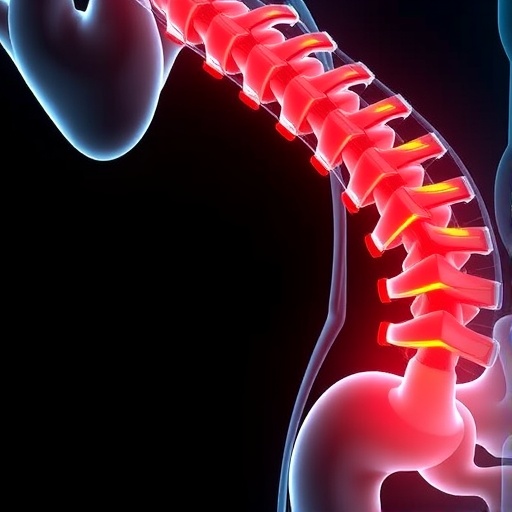"Possibly carcinogenic and should be investigated more closely." For forty years, this has been the conclusion of researchers who have been unsure of whether there is an increased risk of cancer associated with styrene. But now an impartial working group under the auspices of WHO and appointed by the International Agency for Research on Cancer (IARC), has upgraded the warning. Styrene is upgraded from possibly carcinogenic to probably carcinogenic for humans, and the decision is largely based on register-based studies from Aarhus together with new animal evidence.
The new announcement from the World Health Organisation will be published by IARC as a Monograph, authored by 23 handpicked researchers from around the world, including Professor Henrik Kolstad. He is professor in occupational medicine, at the Department of Clinical Medicine at Aarhus University as well as Aarhus University Hospital. He is pleased with the fact that we in Denmark are able to do something that no other country can:
"The reason for my presence in the working group is our register-based research, which is unique throughout the world, and where the most recent styrene study shows the risk of acute myeloid leukaemia, a rare form of leukemia, is doubled. Out of the more than 70,000 people included in the research project, we found 25 cases of acute myeloid leukaemia, where you would statistically expect to find 10," says Professor Henrik Kolstad with reference to the research article 'Styrene exposure and risk of lymphohematopoietic malignancies in 73,036 reinforced plastics workers', published in Epidemiology.
Another important research result is a fivefold risk for a particular type of nasal cancer following styrene exposure. This part of the study is published in Occupational and Environmental Medicine in the article 'Sinonasal adenocarcinoma following styrene exposure in the reinforced plastics industry'.
Styrene is included in synthetic rubber, some insulation materials, disposable tableware, packaging and fiberglass plastic.
In March, the 23 researchers in the WHO working group spent ten intensive working days in Lyon, where they had the task of reviewing and re-evaluating the carcinogenic risk based on the latest research on styrene exposure which includes epidemiological studies of humans together with animal experiments and what are known as mechanism studies. The latter cover cause-effect studies based on biological material.
The issue of styrene and cancer has been a priority for IARC ever since an accumulation of leukaemia cases among employees in the American synthetic rubber industry was seen in the 1970s. However, it was not possible to establish whether the American workers contracted leukaemia from handling styrene or from butadiene, a chemical, which is styrene's permanent companion in the production of synthetic rubber – and this is where the Danish register-based studies come into the picture.
"Clearly, the best place to study the possible health effects of styrene exposure is in the reinforced plasticsindustry, where no butadiene is involved. We have therefore mapped the cancer incidence for those who worked in companies that used styrene in the production during the period 1968-2011," explains Henrik Kolstad on the background for what has ended up being the world's largest epidemiological study of styrene exposure in the reinforced plastics industry.
In the research project, PhD student Mette Skovgaard Christensen, Henrik Kolstad and their research colleagues followed 73,036 employees who during the period 1968-2011 worked in one of the 456 small and medium-sized companies in Denmark that have used styrene in the production of e.g. wind turbines or yachts.
The study has involved a comprehensive linkage of registers, where the researchers used the central business register , along with various other company registers, to identify the relevant companies and their employees. After this stage, the information was linked with the Danish Cancer Register to assess the incidences of different types of cancer among the employees compared to the general population's risk of developing the same diseases.
One of the reasons why the results carry a lot of weight with the WHO is that Kolstad and his colleagues have been able to compare the research data from the cancer patients with measurements of styrene exposure in the Danish reinforced plastics industry over time.
"That part of the study is primarily based on measurements that the Danish Working Environment Authority carried out a number of years ago, since the Danish Working Environment Authority has not carried out measurements of styrene over the past several years. Many companies take measurements, but they are not publicly available. We've requested the relevant data in anonymised form from the companies that analyse the measurements , but unfortunately, we were unable to gain access to them," says Henrik Kolstad
"This is deeply regrettable, because the fact is that good answers to important questions presupposes that we also have access to the relevant information in the future."
Henrik Kolstad emphasizes that the Danish register findings reflect the sins of the past. Significant improvements have been made to the working environments in the Danish reinforced plastics industry in recent years, but globally the problem has not been solved.
###
What is a monograph?
- Monographs are impartial research reports, which assess the strength of evidence for carcinogenic effects so that individual countries have a qualified basis for legislation.
- The reports are prepared by the International Agency for Research on Cancer (IARC), which is one of the WHO's expert bodies.
- Experience shows that countries respond differently to the warnings of the monographs.
- One example is the monograph, which recently showed that diesel exhaust can cause lung cancer. This has led to Germany forbidding the driving of older diesel cars in a number of cities. Other countries have done nothing.
- Another example is the monograph that last year found that the herbicide glyphosate, better known as Roundup, can be carcinogenic. In California this led to requirements for special product labelling, while EU countries do not have to label Roundup as a carcinogen.
Media Contact
Henrik A. Kolstad
[email protected]
45-29-61-03-59
@aarhusuni
http://www.au.dk
http://dx.doi.org/10.1097/EDE.0000000000000819




